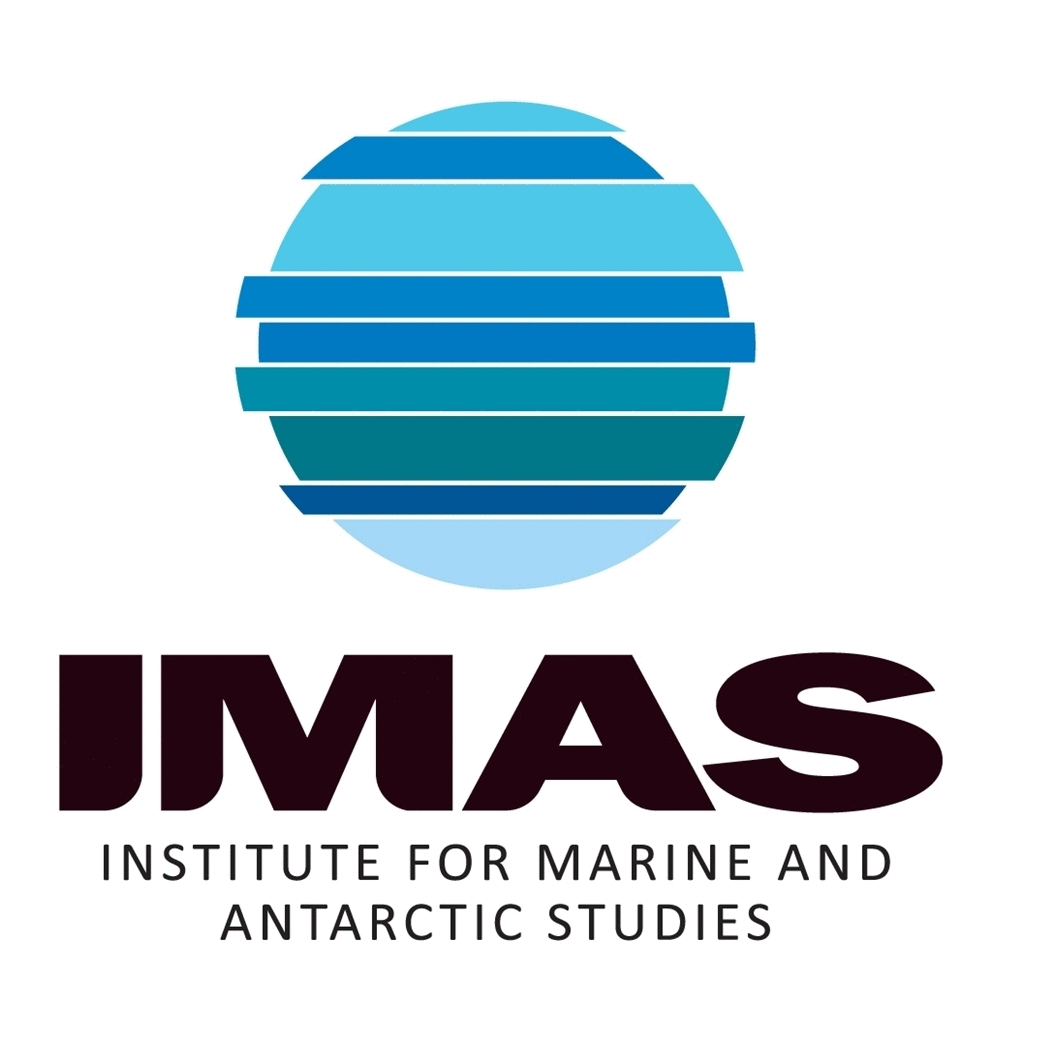Microsatellite DNA markers and morphometrics reveal a complex population structure in a merobenthic octopus species (Octopus maorum) in south-east Australia and New Zealand
Five polymorphic microsatellite loci were developed and then used to assess the population genetic structure of a commercially harvested merobenthic octopus species (Octopus maorum) in south-east Australian and New Zealand (NZ) waters. Beak and stylet morphometrics were also used to assess population differentiation in conjunction with the genetic data.
Simple
Identification info
- Date (Creation)
- 2011-10-26T15:36:00
Principal investigator
Tasmanian Aquaculture and Fisheries Institute (TAFI) - Doubleday, Zoe (PhD student)
Tasmanian Aquaculture and Fisheries Institute, University of Tasmania
Private Bag 49
Hobart
TAS
7001
Australia
Collaborator
Tasmanian Aquaculture and Fisheries Institute (TAFI) - Semmens, Jayson, Dr (PhD supervisor)
Tasmanian Aquaculture and Fisheries Institute, University of Tasmania
Private Bag 49
Hobart
Tasmania
7001
Australia
- Credit
- Holsworth Wildlife Research Endowment
- Credit
- Department of Primary Industries and Water (Tasmania)
- Credit
- Winifred Violet Scott Estate Grant
- Credit
- Unitas Malacologica
- Status
- Completed
Principal investigator
School of Biological Sciences, The University of Adelaide - Doubleday, Zoe, Dr (Post-doctoral fellow)
School of Earth and Environmental Sciences
The University of Adelaide
Adelaide
South Australia
5005
Australia
Collaborator
Institute for Marine and Antarctic Studies (IMAS), University of Tasmania (UTAS) - Semmens, Jayson, Dr
IMAS - Taroona
Private Bag 49
Hobart
TAS
7001
Australia
- Topic category
-
- Oceans
Extent
N
S
E
W
))
N
S
E
W
))
N
S
E
W
))
Temporal extent
- Time period
- 2006-01-01T00:00:00 2007-12-31T00:00:00
Vertical element
- Minimum value
- 1
- Maximum value
- 40
- Identifier
- EPSG::5715
- Name
- MSL depth
- Maintenance and update frequency
- Not planned
Resource format
- Title
- Microsoft Excel
- Date
- Edition
- 2003
- Global Change Master Directory Earth Science Keywords v5.3.8
-
- Biosphere | Zoology | Mollusks
- Keywords (Theme)
-
- Microsatellites
- Morphometrics
- Stylet
- Population structure
- Stylet weight
- Anterior stylet length
- Total stylet length
- Beak height - upper and lower
- Beak width - upper and lower
- Beak length - upper and lower
- Hood length - upper and lower
- Rostrum length - upper and lower
- Keywords (Taxon)
-
- Octopus maorum
Resource constraints
- Classification
- Unclassified
Resource constraints
- Linkage
-
http://i.creativecommons.org/l/by/2.5/au/88x31.png
License Graphic
- Title
- Creative Commons Attribution 2.5 Australia License
- Website
-
http://creativecommons.org/licenses/by/2.5/au/
License Text
- Other constraints
- The citation in a list of references is: citation author name/s (year metadata published), metadata title. Citation author organisation/s. File identifier and Data accessed at (add http link).
Associated resource
- Title
- Population structure of two commercial octopus species
- Date (Creation)
- 2011-10-26T00:00:00
- Language
- English
- Character encoding
- UTF8
- Environment description
- Uni_file_Id: TAS_ZD_20070718_885
- Supplemental Information
- Doubleday, ZA, ‘An integrative approach to understanding the population structure and dispersal patterns of two commercial octopus species (Octopus maorum and Octopus pallidus)’ (2009). PhD thesis, University of Tasmania Doubleday, ZA and Semmens, JM and Smolenski, AJ and Shaw, PW*, ‘Microsatellite DNA markers and morphometrics reveal a complex population structure in a merobenthic octopus species (Octopus maorum) in south-east Australia and New Zealand’, Marine Biology, 156 (6) pp. 1183–1192. ISSN 0025-3162 (2009)
Content Information
- Content type
- Physical measurement
- Name
- Stylet weight
- Name
- mg
- Name
- Anterior stylet length
- Name
- mm
- Name
- Total stylet length
- Name
- mm
- Name
- Beak height - upper and lower
- Name
- mm
- Name
- Beak width - upper and lower
- Name
- mm
- Name
- Beak length - upper and lower
- Name
- mm
- Name
- Hood length - upper and lower
- Name
- mm
- Name
- Rostrum length - upper and lower
- Name
- mm
Distribution Information
- Distribution format
-
- Microsoft excel (xls)
Distributor
Principal investigator
- OnLine resource
- DATA - genetic and morphological data [direct download]
Resource lineage
- Statement
- Octopuses were collected from five sites: north-east Tasmania (NE), south-west Tasmania (SW), the Eaglehawk Bay aggregation (EHB) in south-east Tasmania, South Australia (SA) and New Zealand (NZ). Octopuses were collected as bycatch from rock lobster fishers (at depths between 10 and 40 m) from all sites except EHB, where they were collected from the commercial octopus fishery (at depths between 1 and 3 m). All specimens were frozen prior to dissection. A tissue sample was taken from either the arm or mantle muscle of each individual and preserved in 70–80% ethanol. Stylets were air dried for 24 h prior to dry storage in vials, and beaks were preserved in 70% ethanol. A total of 13 morphometric characteristics from the beaks and stylets were measured from the same specimens used in the genetic analyses: stylet weight (SW), anterior stylet length (ASL), total stylet length (TSL), beak height upper and lower (BHU and BHL), beak width upper and lower (BWU and BWL), beak length upper and lower (BLU and BLL), hood length upper and lower (HLU and HLL) and rostrum length upper and lower. Length measurements were made with digital callipers with a precision of 0.01 mm, and stylet weight was measured to 0.1 mg. Details on microsatellite isolation, screening and data analysis, can be obtained from the published paper.
- Hierarchy level
- Dataset
Metadata
- Metadata identifier
- urn:uuid/434e8ed7-eac0-4d85-8c85-2c677f8163b0
- Language
- English
- Character encoding
- UTF8
Point of contact
Type of resource
- Resource scope
- Dataset
- Metadata linkage
-
https://metadata.imas.utas.edu.au/geonetwork/srv/eng/catalog.search#/metadata/434e8ed7-eac0-4d85-8c85-2c677f8163b0
Point of truth URL of this metadata record
- Date info (Creation)
- 2018-12-17T18:01:18
- Date info (Revision)
- 2024-06-17T16:27:27
Metadata standard
- Title
- ISO 19115-3:2018
Overviews
Spatial extent
N
S
E
W
))
N
S
E
W
))
N
S
E
W
))
Provided by

Associated resources
Not available
 IMAS Metadata Catalogue
IMAS Metadata Catalogue